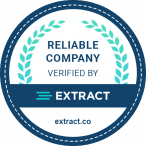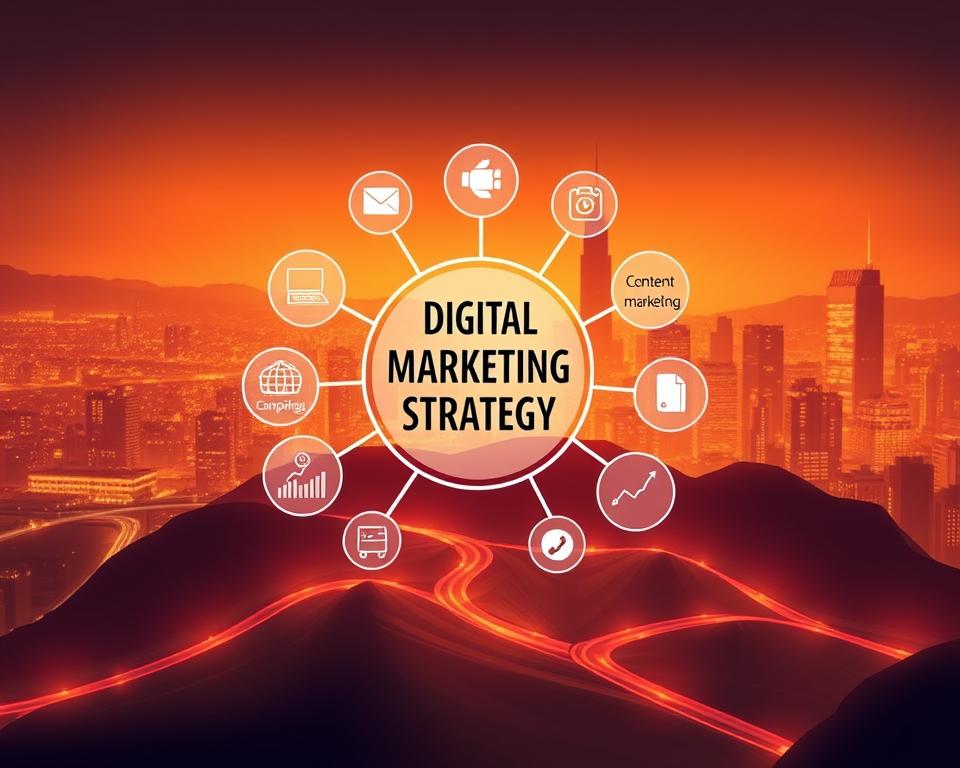In today’s digital world, expanding your business reach is key to boosting sales and staying ahead.
Turning your offline business into an online marketplace is a big step. It might seem scary, but with the right plan, it can really change the game.
By diving into e-commerce and building a strong online presence, you can reach more customers and make more money.
Table of Contents
Key Takeaways
- Understand the importance of digital transformation for your business.
- Assess your current business model for online potential.
- Create a strategic roadmap for your online transition.
- Leverage e-commerce to expand your customer base.
- Monitor and adjust your online strategy for continuous improvement.
The Digital Revolution: Why Offline Businesses Need to Go Online
The digital revolution is changing the business world. It’s now key for offline businesses to move online. As the world connects more, how people shop and what they want is changing.
Current Market Trends Favoring Online Businesses
Online businesses are getting more popular, with e-commerce sales going up. Studies show that online shops are now the top choice for many. This is because they are easy to use and accessible.
Statistical Evidence of Online Marketplace Growth
There’s solid proof that online marketplaces are growing. Here’s a table showing how much they’ve grown in recent years:
| Year | Online Marketplace Sales |
|---|---|
| 2020 | $1.2 trillion |
| 2021 | $1.5 trillion |
| 2022 | $1.8 trillion |
The Cost of Staying Offline in Today’s Economy
Staying offline can cost a business a lot. It makes it hard to compete with online shops. To stay ahead, offline businesses need to think about going online. For tips on boosting your digital presence, check out Next Big Technology.
Assessing Your Offline Business for Digital Transformation
The journey to digital transformation starts with a detailed look at your offline business. You need to know your business’s strengths, weaknesses, and what value you bring to customers.
Identifying Your Business Strengths and Unique Value Proposition
To move your offline business online, first find out what makes it special. This is key to knowing what makes your business stand out and what you can use online.
Product/Service Evaluation for Online Viability
Check if your products or services can work well online. Look at demand, competition, and how easy it is to deliver them digitally.
Defining Your Competitive Advantage
Make sure you know what makes your business unique. This could be special products or top-notch customer service.
Evaluating Your Current Customer Base and Their Online Behavior
It’s important to understand your customers and how they act online. Look at their demographics, what they like, and how they shop to make your online plan better.
| Customer Behavior | Offline | Online |
|---|---|---|
| Purchase Frequency | Monthly | Weekly |
| Average Spend | $50 | $75 |
Conducting a Competitive Analysis of Online Marketplaces in Your Industry
Do a deep dive into online marketplaces in your field. See what they do well and what they don’t, and how you can be different and fill gaps in the market.
Turning Your Offline Business Into an Online Marketplace: A Strategic Roadmap
To make your offline business shine online, you need a strategic roadmap. This plan will guide you, keeping you on track and helping you reach your goals.
Setting Clear Goals and Objectives for Your Online Transition
First, set clear goals for your online marketplace. Think about what you want to achieve, like more sales or more customers. Make sure your goals are specific, measurable, achievable, relevant, and time-bound (SMART).
Establishing Realistic Timelines and Milestones
After setting your goals, create realistic timelines and milestones. This keeps you focused and on track. Break big goals into smaller tasks with realistic deadlines.
Budgeting for Your Digital Transformation
Budgeting is key to your roadmap. You’ll need to figure out the costs for starting and running your online store.
Initial Investment Requirements
The start-up costs include website creation, marketing, and initial stock. Accurate estimates help avoid surprises.
Ongoing Operational Costs
Keep track of ongoing costs like website upkeep, marketing, and managing stock. Knowing these helps plan for the future.
| Cost Category | Initial Investment | Ongoing Costs |
|---|---|---|
| Website Development/Maintenance | $10,000 | $500/month |
| Marketing | $5,000 | $1,000/month |
| Inventory Management | $8,000 | $800/month |
Knowing your start-up and ongoing costs helps you budget well. This supports your online store’s success.
Choosing the Right Online Marketplace Model for Your Business
The online marketplace world has many models, each with its own pros and cons. Businesses need to pick wisely to succeed. The right model can make or break an online business.
B2C vs. B2B vs. C2C Marketplace Models
Businesses face a choice between B2C, B2B, and C2C models. B2C models are best for selling directly to consumers. B2B models are for selling to other businesses. C2C models let consumers buy and sell from each other.
B2C marketplaces like Amazon focus on individual sales. B2B platforms, like Alibaba, are for business-to-business sales. C2C sites, like eBay, let people buy and sell goods among themselves.
Single-Vendor vs. Multi-Vendor Platforms
Another key decision is whether to go for a single-vendor or multi-vendor platform. Single-vendor platforms are run by one business. Multi-vendor platforms let many vendors sell their products or services. Multi-vendor sites can offer more products and attract more customers.
Vertical vs. Horizontal Marketplace Approaches
Businesses also need to decide between a vertical or horizontal marketplace approach. Vertical marketplaces focus on a specific industry or product category. Horizontal marketplaces offer a wide range of products across different categories.
For example, Houzz is a vertical marketplace for home renovation and design. Amazon, on the other hand, is a horizontal marketplace with everything from electronics to clothing.
Technical Foundations: Building Your Online Marketplace Platform
A successful online marketplace starts with its technical base. A solid technical setup is key for smooth interactions between buyers, sellers, and products. It must be scalable, secure, and easy to use.
Custom Development vs. Ready-Made Solutions
Choosing between custom development and a ready-made solution is your first big decision. Popular e-commerce platforms like Shopify, Magento, and WooCommerce are flexible and feature-rich. But for unique or complex needs, custom development might be the better choice.
Popular E-commerce Platforms Comparison
Shopify is easy to use and has a vast app store. Magento is scalable and feature-rich, while WooCommerce is great for WordPress users. Each platform has its own strengths and weaknesses, so choose wisely based on your needs.
Custom Development Considerations
Custom development offers tailored solutions but comes with a big price tag. It’s important to consider the costs, scalability, and maintenance needs.
Essential Features for Your Online Marketplace
Whether you go for a ready-made solution or custom development, some essential features are must-haves. These include easy navigation, strong product management, secure payments, and good vendor tools.
Mobile Optimization and Responsive Design Considerations
Most online shoppers use mobile devices, making mobile optimization and responsive design crucial. Your marketplace must work well on all devices to attract more users and keep them engaged.
By focusing on these technical basics, you can create a strong and growing online marketplace. It will meet the needs of your customers and vendors.
Designing a Seamless User Experience for Your Online Marketplace
To stand out in a competitive market, your online marketplace must offer a seamless and engaging user experience. A well-designed platform not only improves customer satisfaction but also increases conversions and drives repeat business.
Intuitive Navigation and Search Functionality
Intuitive navigation and robust search functionality are critical components of a user-friendly online marketplace. By implementing faceted search and autocomplete features, you can help customers quickly find what they’re looking for. This not only enhances the user experience but also reduces friction and increases the likelihood of a sale.
Streamlined Checkout and Payment Processes
A streamlined checkout process is essential for minimizing cart abandonment rates. Consider implementing a guest checkout option and offering multiple payment methods to cater to different customer preferences. By reducing the number of steps required to complete a purchase, you can significantly improve the overall user experience.
Building Trust Through User Interface Design
The user interface design of your online marketplace plays a crucial role in building trust with your customers. By using a clean, intuitive design and providing clear product information, you can establish credibility and foster a positive user experience.
“A well-designed user interface can make or break an online marketplace.”
By focusing on these key areas, you can create a seamless user experience that drives customer satisfaction, increases conversions, and sets your online marketplace up for long-term success.
Payment Processing and Financial Management in Your Online Marketplace
Your online marketplace’s success depends on its payment and financial systems. A secure and efficient payment process is key. It builds trust with customers and vendors.
Selecting Payment Gateways and Processing Systems
Choosing the right payment gateway is crucial. Look at transaction fees, supported payment methods, and how easy it is to integrate. Popular options include PayPal, Stripe, and Square. For more on secure payment gateways, check Next Big Technology.
- Evaluate the fees associated with different payment gateways.
- Consider the types of payments you want to support (credit cards, digital wallets, etc.).
- Assess the ease of integration with your existing platform.
Managing Commissions, Fees, and Revenue Models
Good financial management means having a clear commission and fee system. You need to decide how much to charge vendors, handle fees, and choose revenue models.
- Decide on a commission rate that is competitive yet profitable.
- Clearly communicate your fee structure to your vendors.
- Consider offering different revenue models to attract a wide range of vendors.
Ensuring Financial Security and Fraud Prevention
Strong security is essential to prevent financial fraud. Use secure payment gateways, two-factor authentication, and watch for suspicious activity.
- Use SSL encryption to secure transactions.
- Implement regular security audits to identify vulnerabilities.
- Utilize machine learning-based fraud detection tools to monitor transactions.
Inventory Management and Logistics for Online Marketplace Success
Effective inventory management and logistics are key for online marketplace success. As these platforms grow, managing inventory and logistics gets more complex. Good logistics boost customer happiness and cut down on costs.
Transitioning from Physical to Digital Inventory Systems
Switching to digital inventory systems is a big step. Digital systems give real-time updates, automate tasks, and show inventory levels. Experts say a good digital system can cut inventory costs by up to 20%. Learn more about transitioning your business.
Shipping, Fulfillment, and Delivery Options
Shipping, fulfillment, and delivery are key to happy customers. Online marketplaces need to pick the right shipping options. They must balance cost and delivery time.
Third-Party Logistics vs. In-House Fulfillment
Choosing between 3PL and in-house fulfillment depends on the marketplace’s size. 3PL offers expertise and scalability. In-house fulfillment gives control over the process.
Shipping Rate Strategies
Shipping rate strategies affect customer satisfaction and costs. Marketplaces can cover shipping costs, pass them on, or offer free shipping for large orders.
Returns and Customer Service Processes
Handling returns and customer service is crucial. A smooth returns process builds trust and loyalty. Online marketplaces should have clear return policies and quick customer service.
“A customer is not just a buyer; it’s a person who trusts your brand. Handling returns and customer service with care is crucial.” –
Digital Marketing Strategies to Launch Your Online Marketplace
A solid digital marketing plan is key for a successful online marketplace. It includes various strategies to boost visibility, attract more visitors, and draw in customers.
SEO and Content Marketing for Marketplace Visibility
Getting your online marketplace to show up in search results is vital. This means doing keyword research, optimizing your site, and creating valuable content. Blogging and guest posting can also make your marketplace a go-to in your field.
Social Media and Email Marketing Campaigns
Using social media can greatly increase your marketplace’s visibility. Share interesting content and run ads on Facebook and Instagram to bring more visitors. Email marketing helps keep customers coming back and builds loyalty.
Paid Advertising and Affiliate Marketing Opportunities
Paid ads, like Google Ads and social media ads, can quickly increase your marketplace’s visibility. Starting an affiliate program also encourages others to promote your site, expanding your audience.
| Digital Marketing Strategy | Description | Benefits |
|---|---|---|
| SEO & Content Marketing | Optimizing for search engines and creating valuable content | Increased visibility, credibility |
| Social Media Marketing | Engaging on social platforms and running targeted ads | Broad reach, targeted traffic |
| Paid Advertising | Investing in ads on Google and social media | Quick visibility, scalable |
Building and Managing a Vendor Network for Your Marketplace
Creating a strong vendor network is key to your online marketplace’s success. Having a variety of high-quality vendors boosts user experience and keeps customers coming back.
Attracting and Onboarding Quality Vendors
To draw in top vendors, show them the perks of being part of your platform. Talk about your marketplace’s unique selling points, fair commission rates, and strong support. Use WordPress tutorials to make a great vendor dashboard. Make sure the onboarding process is smooth, so vendors can start selling fast.
Creating Vendor Guidelines and Quality Control Measures
It’s crucial to have clear vendor guidelines to keep standards high. These should include product quality, customer service, and shipping rules. Regular checks and audits help stick to these standards, making your marketplace reliable for shoppers. A feedback system lets customers rate vendors, helping keep quality up.
Fostering Vendor Relationships and Support Systems
Strong vendor relationships are essential for your marketplace’s success. Offer quick support, competitive terms, and keep in touch to understand their needs. A quality control system and training help vendors improve and grow. Look into multi-vendor marketplace solutions to boost your support for vendors.
Legal Considerations When Establishing an Online Marketplace
Setting up an online marketplace requires careful attention to legal aspects. You need a strong legal framework to protect your business and users. This ensures compliance and reduces risks.
Marketplace Terms of Service and User Agreements
Creating detailed Terms of Service (ToS) and User Agreements is key. These documents set the rules for using your platform. They help you and your users understand each other’s expectations.
Key components of ToS and User Agreements:
- User responsibilities and obligations
- Prohibited activities on the platform
- Intellectual property rights and content usage
- Termination conditions for user accounts
Privacy Policies and Data Protection Compliance
Privacy policies are essential for user trust. They explain how you handle user data. You must follow data protection laws like GDPR and CCPA.
GDPR and CCPA Requirements
GDPR and CCPA give users rights to their data. They can ask for access, corrections, and data deletion. You must have clear and secure data processing practices.
Data Security Best Practices
Strong data security is crucial. Use encryption, secure servers, and perform regular audits. This protects against data breaches.
| Data Security Measure | Description | Benefits |
|---|---|---|
| Encryption | Converting data into a code to prevent unauthorized access | Protects sensitive user information |
| Secure Servers | Using servers with advanced security features | Reduces risk of data breaches |
| Regular Security Audits | Systematic examination of security protocols | Identifies vulnerabilities and ensures compliance |
Intellectual Property Rights and Dispute Resolution
Protecting intellectual property (IP) is vital. Make sure your platform doesn’t infringe on existing IPs. Also, have ways to report and solve IP disputes.
Good dispute resolution helps avoid legal problems. It makes your marketplace more trustworthy for vendors and customers.
Measuring Success: Analytics and KPIs for Your Online Marketplace
Analytics and KPIs are key to a successful online marketplace. They give insights into how well it’s doing. It’s important to track the right metrics and use data analytics tools.
Essential Metrics to Track Marketplace Performance
To see how your online marketplace is doing, you need to watch certain key performance indicators. These include:
- Gross Merchandise Volume (GMV)
- Customer Acquisition Cost (CAC)
- Average Order Value (AOV)
- Vendor Satisfaction Rate
- Customer Retention Rate
| Metric | Description | Importance |
|---|---|---|
| GMV | Total value of goods sold | High |
| CAC | Cost of acquiring new customers | High |
| AOV | Average amount spent per order | Medium |
Tools for Data Collection and Analysis
Choosing the right tools is key for collecting and analyzing data. Popular choices are Google Analytics, Mixpanel, and custom-built solutions. These use data warehousing and business intelligence tools.
“Data is the new oil. It’s valuable, but if it isn’t refined, it can’t be used.”
Using Analytics to Drive Continuous Improvement
Analytics should guide your decisions, helping you find ways to get better. By regularly checking your KPIs, you can tweak your strategies. This helps improve performance and grow your marketplace.
By focusing on the right metrics and using analytics, you can build a data-driven culture. This will help your online marketplace succeed in the long run.
Overcoming Common Challenges in Online Marketplace Development
Starting and keeping an online marketplace alive is tough. The digital world keeps changing. It’s key to know the hurdles and find ways to beat them for lasting success.
Building Initial Supply and Demand
The chicken-and-egg problem is a big hurdle: getting both buyers and sellers at the same time. To tackle this, marketplaces should highlight their value to sellers. They can offer good rates and strong support. For example, making a marketplace like Amazon or needs careful planning.
Some good ways to tackle this include:
- Offering perks to early users
- Running big marketing campaigns
- Making sure the site is easy to use
Managing Scalability and Growth Issues
As a marketplace grows, it hits scalability challenges that affect its setup, logistics, and service. To handle these, investing in tech that grows with the business is key. Also, making processes better and keeping an eye on how things are going is crucial.
Dealing with Competition and Market Saturation
With more online marketplaces, competition and market fullness grow. To stand out, marketplaces need to be unique. They should focus on great service and smart marketing.
Some ways to face competition include:
- Targeting specific markets
- Building a strong brand
- Always looking to improve the site
Case Studies: Successful Offline-to-Online Marketplace Transitions
Switching from offline to online marketplaces is a big step. But, looking at successful transitions can guide businesses. They can learn from others’ experiences, avoiding common mistakes.
Small Business Success Stories and Lessons Learned
Small businesses have unique challenges when going online. Yet, some have thrived by focusing on what they do best. For example, a local boutique might use its personal touch to win online customers. Creating an eCommerce app helps reach more people through different channels.
Important lessons from small businesses include adapting to local markets and using digital marketing well.
Enterprise-Level Transformation Examples
Big companies also face big hurdles when going online. They need to merge new digital systems with old ones. Walmart and Best Buy have done this by investing in e-commerce and digital marketing. Their stories show the need for growth and flexibility in digital changes.
| Company | Pre-Transition Challenges | Transition Strategies | Post-Transition Outcomes |
|---|---|---|---|
| Walmart | Legacy system integration | Invested in e-commerce platform, digital marketing | Significant online sales growth |
| Best Buy | Competing with online retailers | Enhanced online presence, omnichannel retailing | Improved customer experience, increased sales |
Industry-Specific Transition Strategies
Different industries have their own hurdles when going online. For instance, food businesses must deal with safety and logistics. Fashion companies need to focus on visuals and trends. Knowing these challenges helps in planning the right strategy.
Looking at various industries’ success stories helps businesses find common strategies. These can be tailored to fit their own needs.
Conclusion: Embracing the Future of Commerce Through Digital Transformation
Businesses must adapt to the changing world of commerce. Turning your offline business into an online marketplace is key. This move can help you reach more customers, engage with them better, and grow your business.
The digital age is here, and companies that adapt will do well. With good planning, smart decisions, and knowing your customers and vendors, you can build a successful online marketplace. This marketplace will meet the needs of your audience as they change.
Use the tips from this article to smoothly transition to digital. Remember, success in today’s digital world comes from embracing change and staying ahead. Keep moving forward with these principles in mind.



















